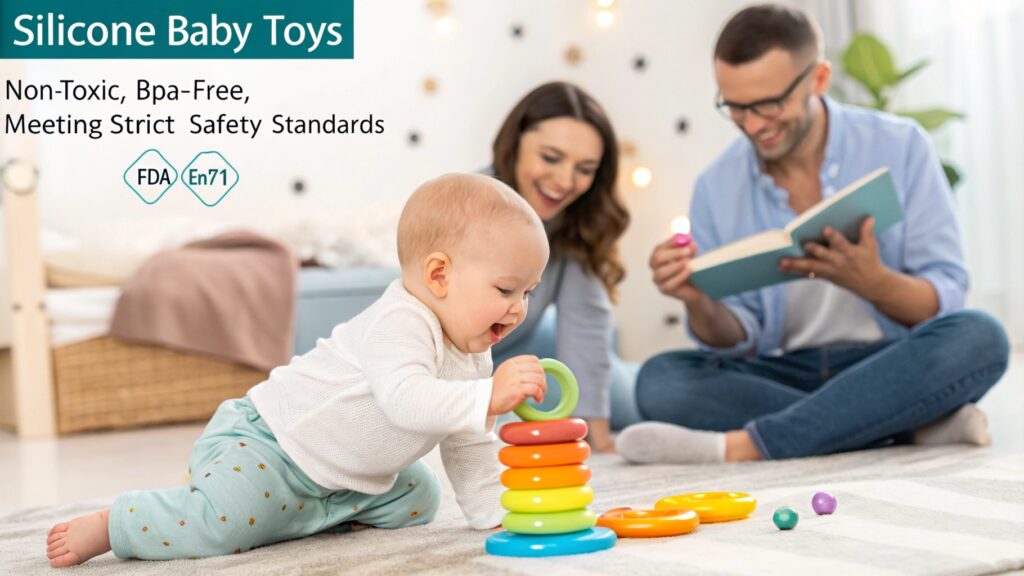
Parents always prioritize safety when choosing baby toys, and silicone toys have gained popularity for their many benefits.
Silicone baby toys are generally safe as they are non-toxic, BPA-free, and meet strict safety standards like FDA and EN71.
However, understanding the specifics of silicone’s safety and its comparison with other materials can help parents make better decisions.
Why do people want silicone baby dolls?
Silicone baby dolls are popular among parents and collectors for their lifelike qualities.
People choose silicone baby dolls because they feel soft, are durable, and are hypoallergenic.
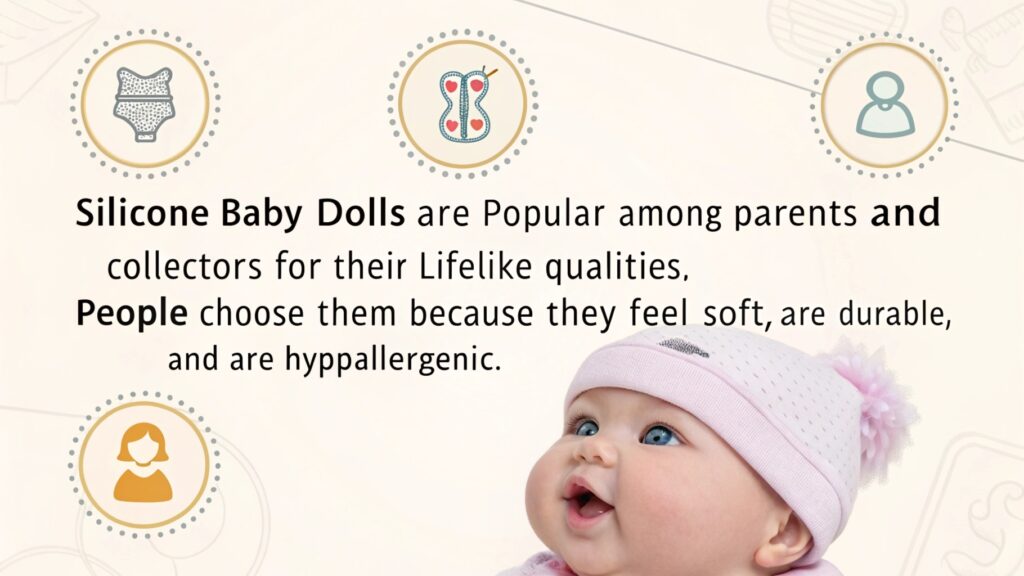
Advantages of silicone baby dolls
- Soft and flexible texture mimics real skin.
- Easy to clean and maintain.
- Safe for babies due to non-toxic properties.
- Ideal for therapeutic or sensory use.
Are silicones safe?
Silicone is often touted as one of the safest materials for baby products.
Silicone is safe for babies because it is inert, non-toxic, and free from harmful chemicals like BPA, phthalates, and latex.
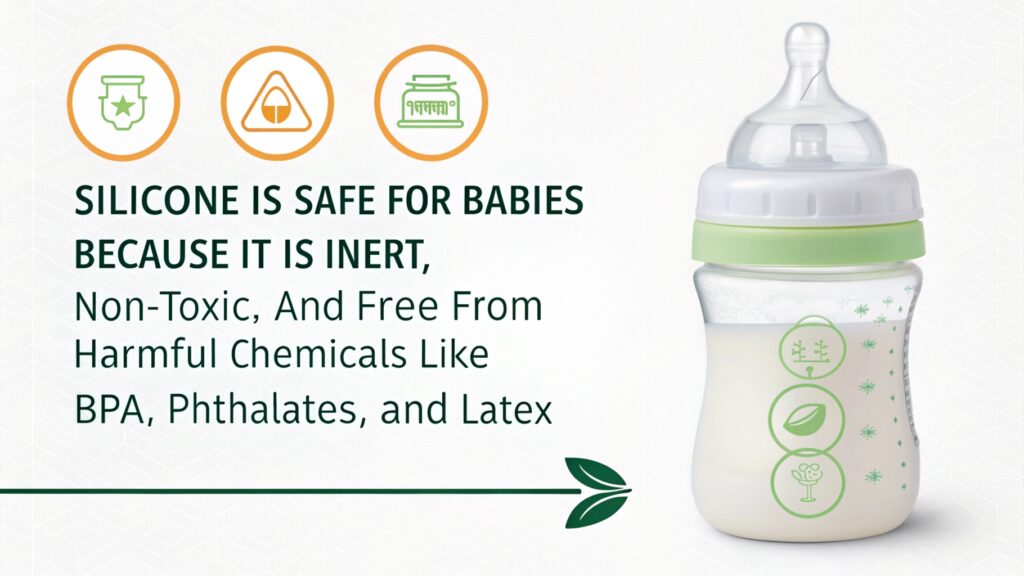
Why silicone is considered safe?
- Non-porous surface resists bacteria growth.
- High heat resistance makes it safe for sterilization.
- Approved by food and medical-grade safety certifications (e.g., FDA, LFGB).
Does silicone give off microplastics?
With rising concerns about microplastics, parents wonder if silicone contributes to the issue.
Silicone does not release microplastics because it is not a plastic but a synthetic rubber-like material.
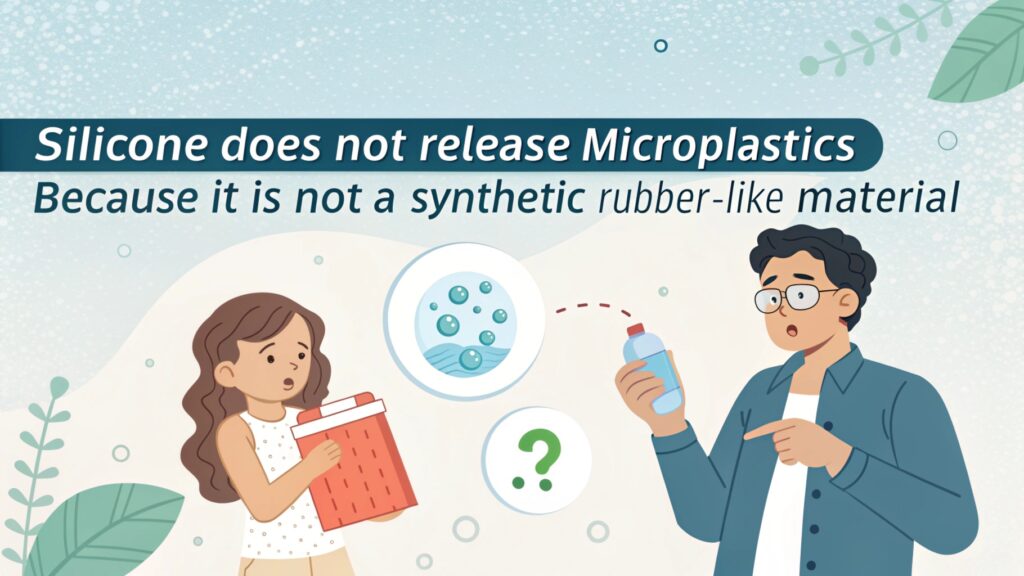
Silicone vs. microplastics
- Made from silica (sand-derived), silicone is stable and doesn’t break down into microplastics.
- Unlike plastics, silicone resists degradation under normal use conditions.
Is silicone or rubber better for babies?
Both silicone and rubber are used in baby products, but which is safer and more suitable?
Silicone is often better for babies due to its durability, non-toxicity, and easier maintenance.
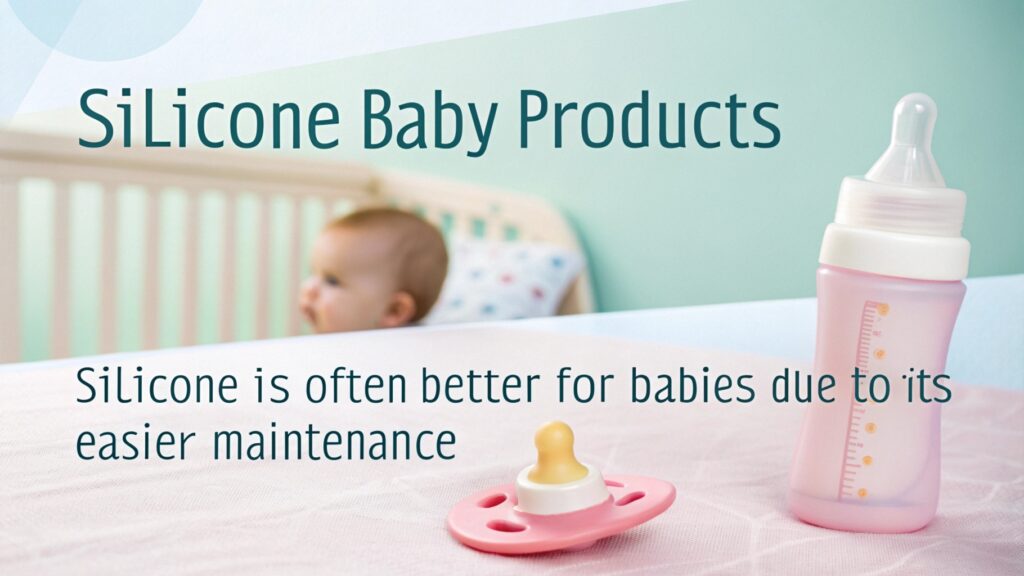
Comparison of silicone and rubber
| Material | Durability | Maintenance | Allergens | Heat Resistance |
|---|---|---|---|---|
| Silicone | High | Easy | None | High |
| Rubber | Medium | Harder | Latex risk | Moderate |
Silicone is preferred for teethers, toys, and feeding products due to its reliability.
Is there BPA in silicone?
BPA is a harmful chemical found in some plastics, but does it exist in silicone?
Silicone is BPA-free and safe for use in baby toys and feeding products.
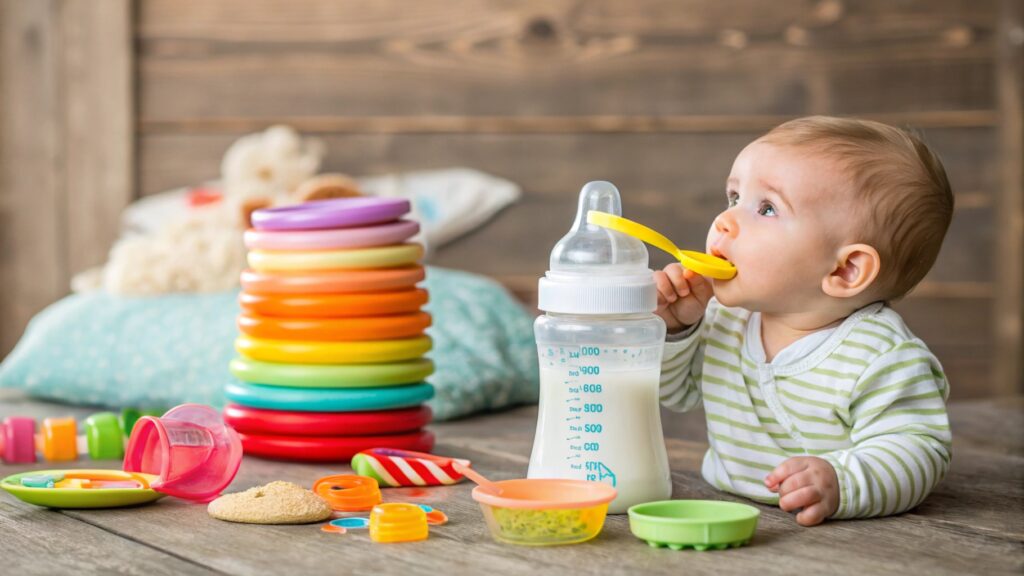
Why silicone is BPA-free
- Silicone is made from natural silica, not petroleum-based plastics.
- BPA-free certification is standard for high-quality silicone products.
What is the safest material for teethers?
Parents seek the safest options for baby teethers to avoid risks of toxicity or injury.
Food-grade silicone is the safest material for teethers due to its softness, durability, and non-toxic properties.
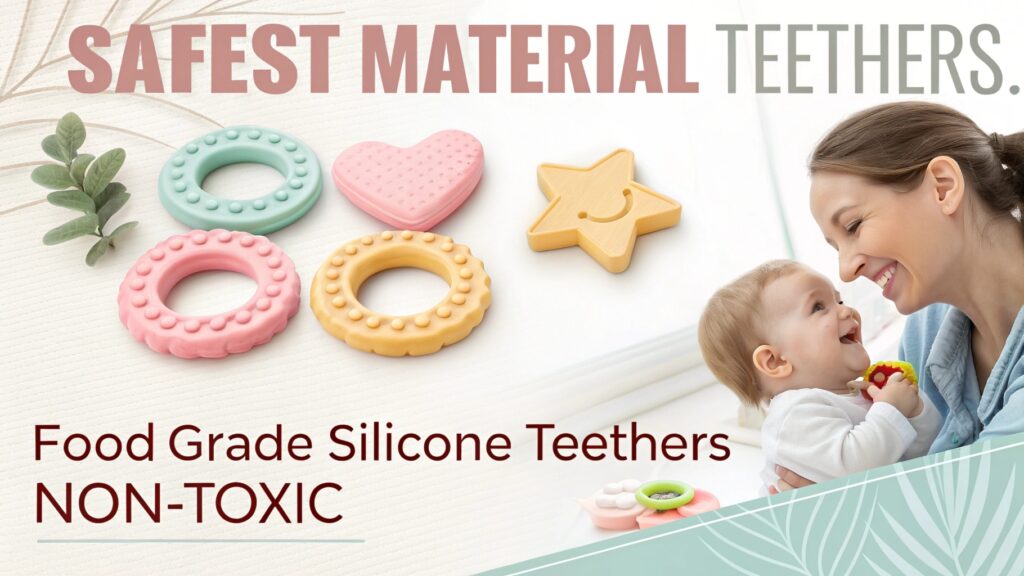
Materials comparison for teethers
- Silicone: Soft, easy to sanitize, and safe for chewing.
- Wood: Natural but harder to clean and less durable.
- Plastic: Risk of BPA or microplastics makes it less safe.
Is silicone toxic if ingested?
Babies tend to put everything in their mouths, leading parents to worry about ingestion.
Silicone is non-toxic even if ingested in small amounts, but it should not be consumed in large pieces.
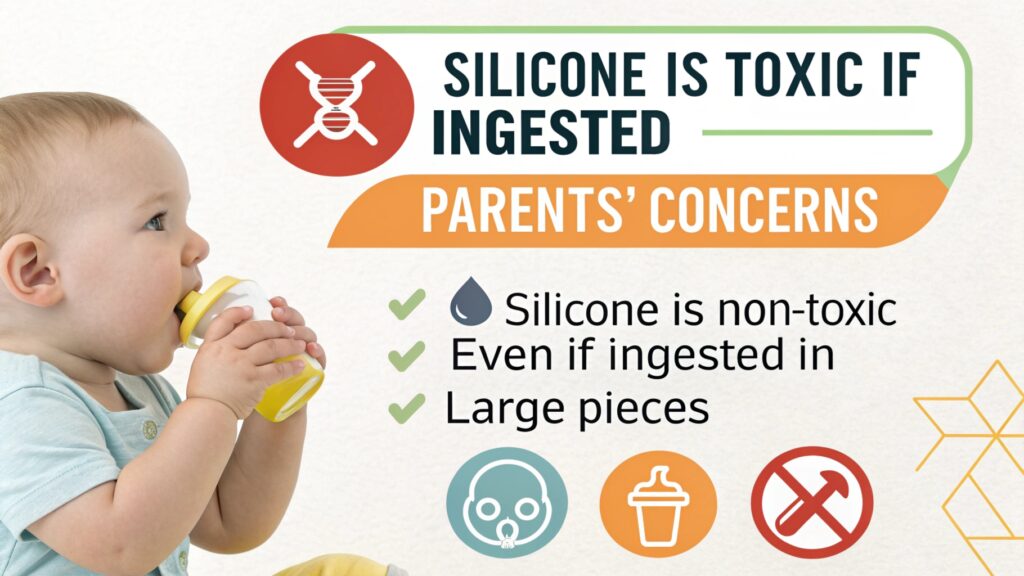
Why silicone is non-toxic
- Silicone does not release harmful chemicals.
- Medical-grade silicone is even used in baby pacifiers and bottle nipples.
Conclusion
Silicone baby toys are safe, durable, and ideal for babies, offering peace of mind to parents who prioritize safety and hygiene.
